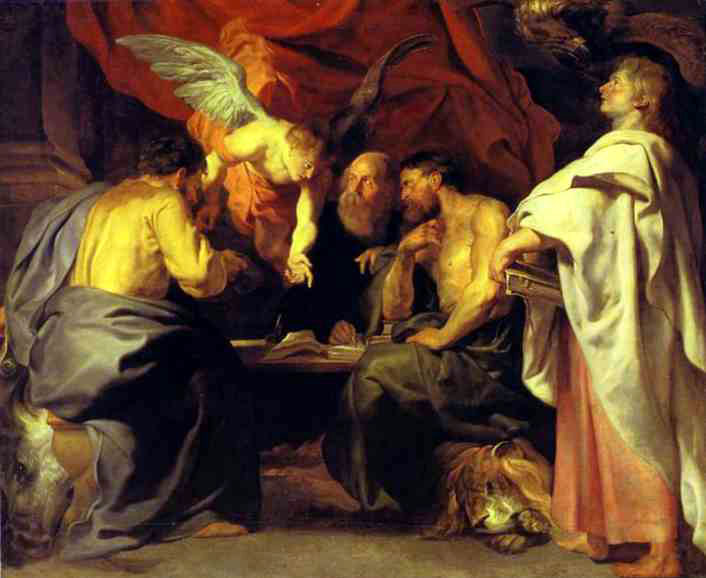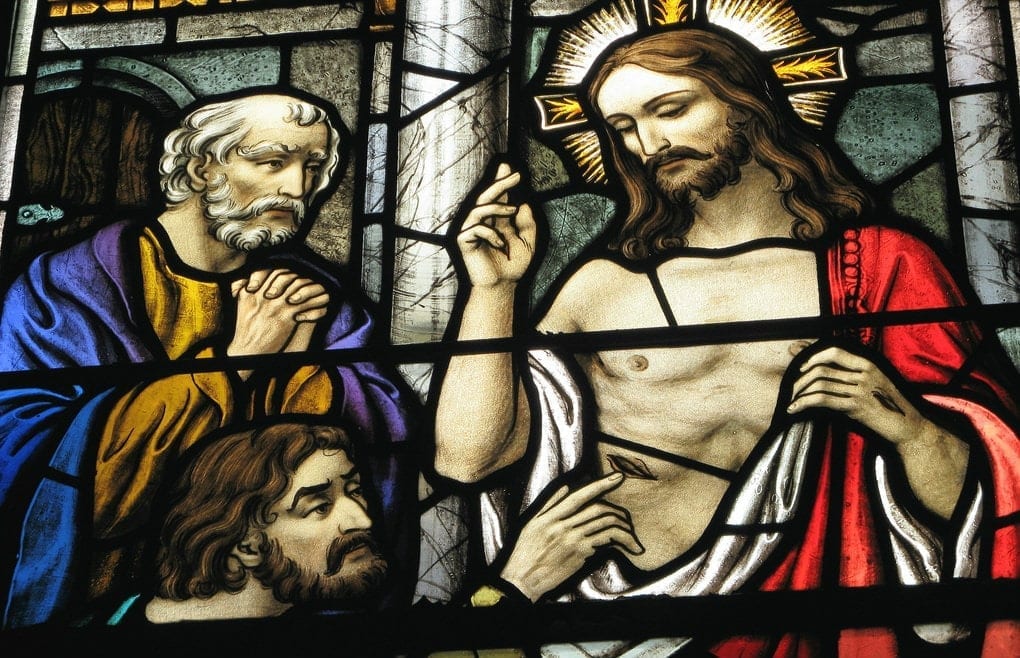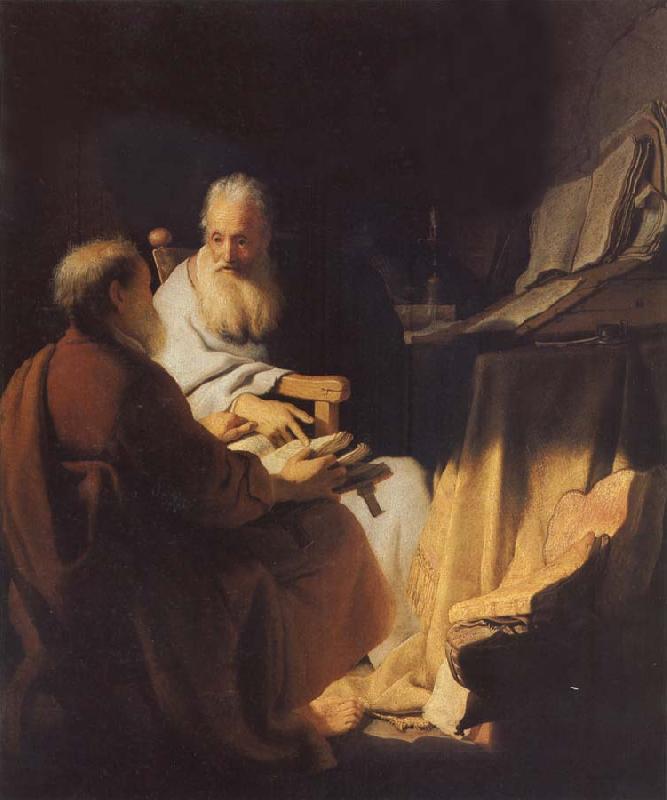
* * * *
Saturday, May 20, 2023 – The Daily Office Readings for Friday, May 12, included Luke 8. Starting at verse 40, Luke 8:40-56 tells of Jesus raising a dead girl and healing a sick woman.
That Friday morning, Luke 8:55 caught my eye.
It all started when Jairus, a “ruler of the synagogue,” asked Jesus to come to his house. His only daughter, 12 years old, was dying. But by the time Jesus healed the sick woman, a man came from Jairus’ house and said, “Your daughter is dead… Don’t bother the teacher anymore.”
Jesus assured Jairus, “Don’t be afraid; just believe, and she will be healed.”
When Jesus got to the house and told mourners the daughter wasn’t dead, but sleeping, “They laughed at Him.” (A strange reaction?) Then came Luke 8:55. Jesus went into the room where the body lay, with the parents and three disciples. He spoke to her, and, “Her spirit returned, and at once she stood up.” (Other translations read, “And her spirit returned.”)
Which made me wonder, “Where did her spirit go?” (Between the time she died and when Jesus brought her back to life.) Put another way, “Where did her soul go?” (And is there a difference, between soul and spirit?) The Bible tells of at least 10 People Raised From the Dead, including Jairus’ daughter, Lazarus, and Tabitha. (Dorcas.) They all raise the question, “Where did their souls – or spirits – go, between the time they died and they were brought back to life?”
Those are deep questions, but somehow they seem related to the idea of Ensoulment:
[T]he moment at which a human or other being gains a soul. Some belief systems maintain that a soul is newly created within a developing child and others, especially in religions that believe in reincarnation, [or] that the soul is pre-existing and added at a particular stage of development. [Emphasis added.]
Wikipedia added Aristotle‘s saying the human soul enters the forming body some time after conception. (40 days later for male embryos or 90 days for female embryos, though he didn’t say how to tell the difference.) He added that quickening – when a pregnant woman first starts to feel the fetus move – “was an indication of the presence of a soul.” That in turn raises the question: “Where do these souls – entering into the fetus – come from? Are they created ex nihilo at the moment of conception? Are they ‘created’ at all, as we understand the term?”
We might answer those questions by asking another question. “Is the human soul a form of energy?” If the human soul is a form of energy, we have our answer. The First law of thermodynamics says that “energy is neither created nor destroyed, it simply changes form.” Which means that if a human soul is a form of energy – and I’d say it is – then it is neither created at the moment of conception, nor destroyed at the moment of death.
Then there’s Jeremiah 1:5, “Before I formed you in the womb I knew you.”
I could say “The Bible Says It, I Believe It, That Settles It,” but that would only raise a host of new questions to debate.* For now let’s just say that at least this once, the First law of thermodynamics and Jeremiah 1:5 support each other. (Even if they don’t agree exactly.) God knew Jeremiah’s soul – or spirit – at some time before He formed Jeremiah “in the womb.”
Which again makes me wonder, “Where exactly was Jeremiah’s soul, or spirit, before God formed him in the womb?” That too is a deep question, but this and the other deep questions all seem somehow related to the most recent Feast Day, to wit: The Feast of the Ascension. (“Related” to me at least. INQUIRING MINDS WANT TO KNOW!)
This Feast – coming this year on May 18 – commemorates the “bodily Ascension of Jesus into heaven.” (And it’s “ecumenical,” meaning “universally celebrated.”) In terms of importance it ranks right up there “with the feasts of the Passion, of Easter, and Pentecost.” It’s always celebrated on a Thursday, the 40th day of Easter. (More precisely, the 40th day of Eastertide, the 50-day church season running from Easter Day to Pentecost Sunday.)
That’s the part of the Gospel account that began when Jesus led the disciples out of the room where He first appeared, and on out of Jerusalem. (“To the vicinity of Bethany,” right after Luke 24:45, where He “opened their minds,” as noted above.) Then came Luke 24:50-51:
When he had led them out to the vicinity of Bethany, he lifted up his hands and blessed them. While he was blessing them, he left them and was taken up into heaven.
And speaking of the First law of thermodynamics, I first mentioned that concept back in 2014’s On Ascension Day. I argued then that that Law was “proof positive that the human soul – a definite form of energy – is neither ‘created nor destroyed, but simply changes form.’” Which to me raised the question, “Where was my soul before I was born?” I included a Note:
That brings to mind a meditation from the Kaballah (basically, “Jewish mysticism”). See e.g. Kabbalah – Wikipedia. In the meditation, you imagine your soul, before you were born, in the situational-equivalent of sitting around a kitchen table. You are sitting around this hypothetical table with other souls yet to be born. With these other souls, you talk about your future life, looking ahead to what you might accomplish in your upcoming “incarnation.”
And if that’s an accurate representation, it could explain how God “knew Jeremiah’s soul” at some time before He formed the prophet “in the womb.” But of course there are plenty of people who don’t believe in the bodily Ascension of Jesus into heaven, or the whole idea of life after life for that matter. That’s where we Christians turn to Hebrews 12:2, which calls Jesus “the pioneer and perfecter of our faith.” And a pioneer is “a person who is among the first to explore or settle a new country or area.” So just as Jesus ascended to heaven – body and soul – we have the hope of following Him there at the end of our earthly pilgrimage.
But of course the best proof for all this comes from personal experience, and I can say from personal experience* that there’s definitely something to this “Jesus stuff.”
You can take my word for it, or you can work to interact with God yourself. Either way:
Here’s wishing you a happy (belated) Ascension Day!
* * * *

* * * *
The upper image is courtesy of The Raising of the Daughter of Jairus, 1881 – Gabriel von Max.
The Book of Common Prayer reference. The “corporate-mystical” prayer is on page 339, the post-communion prayer for Holy Eucharist, Rite I.
The full Daily Office readings for Friday, May 12, 2023: “AM Psalm 106:1-18; PM Psalm 106:19-48, Wisdom 16:15-17:1; Rom[ans] 14:13-23; Luke 8:40-56.
Re Luke 8:55. See also, Raising of Jairus’ daughter – Wikipedia. The daughter’s age “represents the age at which girls come of age in Judaism,” and thus:
Mark and Luke mention the girl’s age to emphasi[z]e the tragedy of her dying before her father could marry her off, receive a dowry and expect grandchildren to continue his lineage. Mary Ann Getty-Sullivan (2001): ‘Thus the father may have faced financial loss as well as social disgrace, in addition to the personal sorrow of his daughter’s illness and death.
Re: The subtle difference between spirit and soul. See What Is the Difference Between a Soul and a Spirit, or What Is the Difference between the Soul and the Spirit?
Re: Ensoulment and quickening: “Other religious views are that ensoulment happens at the moment of conception; or when the child takes the first breath after being born; at the formation of the nervous system and brain; at the first detectable sign of brain activity; or when the fetus is able to survive independently of the uterus (viability).”
Re: First law of thermodynamics and the idea that energy is neither created nor destroyed, it simply changes form. I found that thought comforting, somehow, years ago when my nephew (Kenny) died tragically, too young and for no apparent purpose. That was an example of “What doesn’t kill you, makes you stronger.” (Nietzsche.) My Faith was shaken to the core, but came out stronger.
Re: “Creatio ex nihilo.” According to Wikipedia, the term – Latin for “creation out of nothing” – is the doctrine that matter – including souls and energy itself – “is not eternal but had to be created by some divine creative act. It is a theistic answer to the question of how the universe comes to exist. It is in contrast to ‘Ex nihilo nihil fit’ or ‘nothing comes from nothing.'”
Re: “The Bible Says It, I Believe It, That Settles It.” That article notes the “oversimplification of scripture [which] ignores a host of historical and cultural considerations we must take into account when we study scripture because there were historical and cultural circumstances that directly influenced the writing of the Bible.” It cites Bible passages that support killing “witches,” and children who curse their parents, for example. See also Just because you believe the Bible ‘says it’ doesn’t ‘settle it:'”
To use the Bible in this way is an oversimplification at best and a lazy or arrogant generalization at worst. The author of Hebrews challenges us to see the word of God (logos) as a breathing life-force that is actively effective to penetrate into the depths of each of us, bringing conviction and discernment to our lives as we engage in relational interaction with the Spirit of God… [Further,] squabbles over inerrancy lose substantive value and overlook the contamination of the Scriptures by frail and sinful humans. Humans transmitted, wrote, transcribed, translated and interpreted the Bible.
Note also the definition of INTERACTION, according to the Cambridge Dictionary: “an occasion when two or more people or things communicate with or react to each other.” See also Wesleyan Quadrilateral – Wikipedia, on the four sources of theological and doctrinal development, of which personal experience – personal interaction with God – “is the strongest proof of Christianity.”
Re: INQUIRING MINDS WANT TO KNOW. According to the Cambridge English Dictionary, the term is “used when asking someone to give you information that was previously secret or unknown.” But see also National Enquirer – Wikipedia, “During the 1980s, the tabloid’s slogan in radio and TV ads was ‘Enquiring minds want to know.'”
On the May 18 feast day see also Ascension Day 2017 – “Then He opened their minds.”
Re: Hebrews 12:2. The full passage reads: “Let us fix our eyes on Jesus, the pioneer and perfecter of faith. For the joy set before him he endured the cross, scorning its shame, and sat down at the right hand of the throne of God.”
The lower image is courtesy of the Wikipedia article, Ascension of Jesus. To the caption above I added, after He – Jesus – “opened their minds…”
* * * *

















